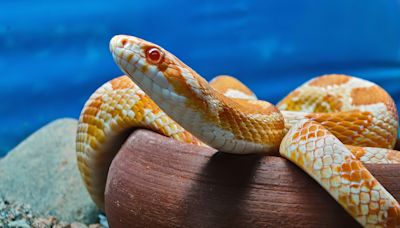Search results
People also ask
When did mammals come into existence?
How did mammals evolve?
Where did mammals come from in the Triassic period?
Who are the ancestors of mammals?
The evolution of mammals has passed through many stages since the first appearance of their synapsid ancestors in the Pennsylvanian sub-period of the late Carboniferous period. By the mid- Triassic, there were many synapsid species that looked like mammals.
- Overview
- The evolution of the mammalian condition
Mammals were derived in the Triassic Period (about 252 million to 201 million years ago) from members of the reptilian order Therapsida. The therapsids, members of the subclass Synapsida (sometimes called the mammal-like reptiles), generally were unimpressive in relation to other reptiles of their time. Synapsids were present in the Carboniferous Period (about 359 million to 299 million years ago) and are one of the earliest known reptilian groups. They were the dominant reptiles of the Permian Period (299 million to 252 million years ago), and, although they were primarily predaceous in habit, the adaptive radiation included herbivorous species as well. In the Mesozoic Era (about 252 million to 66 million years ago), the most important of the synapsids were the archosaurs, or “ruling reptiles,” and the therapsids were, in general, small active carnivores. Therapsids tended to evolve a specialized heterodont dentition (that is, a set of teeth separated into molars, incisors, and canines) and to improve the mechanics of locomotion by bringing the plane of action of the limbs close to the trunk. A secondary palate was developed, and the temporal musculature, the muscle involved in closing the jaw, was expanded.
The several features that separate modern reptiles from modern mammals doubtless evolved at different rates. Many attributes of mammals are correlated with their highly active habit—for example, efficient double circulation with a completely four-chambered heart, anucleate and biconcave erythrocytes, the diaphragm, and the secondary palate (which separates passages for food and air and allows breathing during mastication or suckling). Hair for insulation is a correlate of endothermy, or warm-bloodedness, the physiological maintenance of individual temperature independent of environmental temperature. Endothermy allows high levels of sustained activity. The unique characteristics of mammals thus would seem to have evolved as a complex interrelated system.
Mammals were derived in the Triassic Period (about 252 million to 201 million years ago) from members of the reptilian order Therapsida. The therapsids, members of the subclass Synapsida (sometimes called the mammal-like reptiles), generally were unimpressive in relation to other reptiles of their time. Synapsids were present in the Carboniferous Period (about 359 million to 299 million years ago) and are one of the earliest known reptilian groups. They were the dominant reptiles of the Permian Period (299 million to 252 million years ago), and, although they were primarily predaceous in habit, the adaptive radiation included herbivorous species as well. In the Mesozoic Era (about 252 million to 66 million years ago), the most important of the synapsids were the archosaurs, or “ruling reptiles,” and the therapsids were, in general, small active carnivores. Therapsids tended to evolve a specialized heterodont dentition (that is, a set of teeth separated into molars, incisors, and canines) and to improve the mechanics of locomotion by bringing the plane of action of the limbs close to the trunk. A secondary palate was developed, and the temporal musculature, the muscle involved in closing the jaw, was expanded.
The several features that separate modern reptiles from modern mammals doubtless evolved at different rates. Many attributes of mammals are correlated with their highly active habit—for example, efficient double circulation with a completely four-chambered heart, anucleate and biconcave erythrocytes, the diaphragm, and the secondary palate (which separates passages for food and air and allows breathing during mastication or suckling). Hair for insulation is a correlate of endothermy, or warm-bloodedness, the physiological maintenance of individual temperature independent of environmental temperature. Endothermy allows high levels of sustained activity. The unique characteristics of mammals thus would seem to have evolved as a complex interrelated system.
Most mammals on the African ark began to disappear around 20 million years ago, after Africa came into contact with the rest of the world again. But Africa wasn't the only ark.
- Rick Gore
Apr 2, 2020 · By the middle of the Eocene (45 MYA), all the major groups of mammals alive today had come into existence – though not necessarily as we know them now. Primates for instance, have been around since the beginning of the Paleocene (65 MYA) but the distant bipedal ancestors of man only occurred for the first time 5 MYA.
Oct 16, 2021 · In fact, the first mammals evolved from a population of vertebrates called therapsids (mammal-like reptiles) at the end of the Triassic period and coexisted with dinosaurs throughout the Mesozoic Era. But part of this folktale has a grain of truth.
- Bob Strauss
Oct 31, 2023 · Mammals are the only living synapsids, derived from a lineage in the Jurassic period. Two groups of mammals include the eutherians, which are closely related to placentals and the metatherians, which are more closely related to the marsupials.
Jun 1, 2016 · How did mammals come to be the planet’s dominant vertebrate creatures? In the June Scientific American paleontologists Stephen Brusatte of the University of Edinburgh in Scotland and Zhe-Xi...

